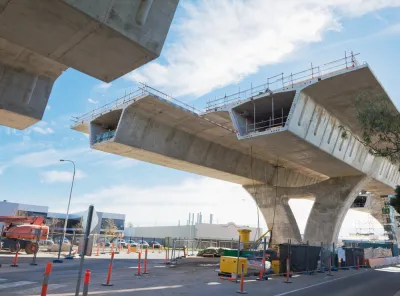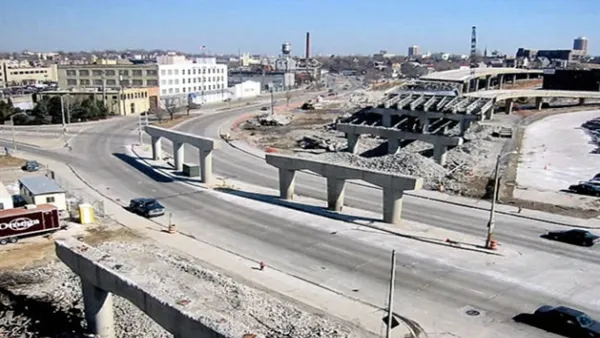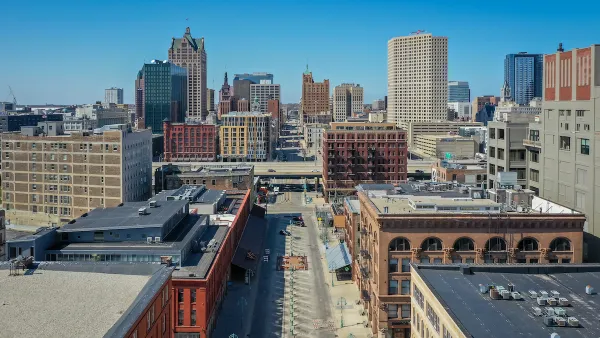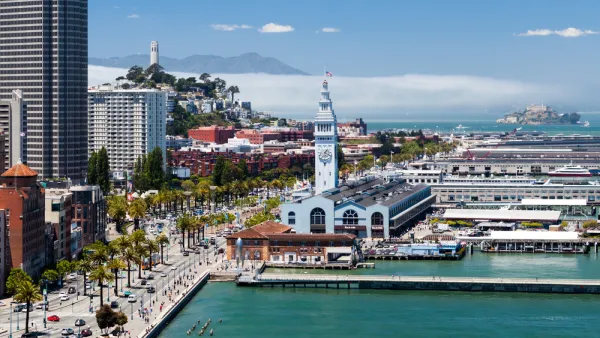Communities divided by freeways for decades are now looking to reconnect, and the U.S. Department of Transportation is stepping in to offer support.

The pendulum on new highway construction seems to be swing backwards now as more cities look to tear down, bury or bridge over existing freeways that have divided communities for years. Pete Bigelow of Car and Driver writes that the movement to break down the physical barriers caused by the interstate freeway system cutting through cities has gained strong support from U.S. Department of Transportation Secretary Anthony Foxx. Last month, the Dept. of Transportation launched the Every Place Counts design challenge, with the goal of finding creative solutions to stitch back together neighborhoods and communities divided by highways in cities around the country. Foxx and his team toured Philadelphia, Nashville, Spokane, and Minneapolis and spoke with locals about potential solutions.
Unlike the Smart City Challenge, a recent DOT competition that ultimately awarded $40 million in federal funds to Columbus, Ohio, to implement an innovative network of connected transportation options, there’s no funding attached to the Every Place Counts challenge. At this stage, the support is only in technical planning, though transportation officials say they’ll help communities pursue funds for implementation.
But both competitions highlight the way federal officials are examining transportation’s role in revitalizing urban cores and helping some of the country’s poorest residents gain access to health care, education, public spaces, and better jobs. In the case of Every Place Counts, the program is analyzing how transportation contributed to these problems in the first place.
As Bigelow notes, the idea of freeway removal is still relatively new, with opponents expressing fears of gridlock and suffering business. However, as case studies in Portland, Milwaukee, and San Francisco have shown, these fears are largely unfounded.
FULL STORY: The Future of Neighborhoods: Removing Urban Freeways Gains Fresh Traction

Analysis: Cybertruck Fatality Rate Far Exceeds That of Ford Pinto
The Tesla Cybertruck was recalled seven times last year.

National Parks Layoffs Will Cause Communities to Lose Billions
Thousands of essential park workers were laid off this week, just before the busy spring break season.

Retro-silient?: America’s First “Eco-burb,” The Woodlands Turns 50
A master-planned community north of Houston offers lessons on green infrastructure and resilient design, but falls short of its founder’s lofty affordability and walkability goals.

Test News Post 1
This is a summary

Analysis: Cybertruck Fatality Rate Far Exceeds That of Ford Pinto
The Tesla Cybertruck was recalled seven times last year.

Test News Headline 46
Test for the image on the front page.
Urban Design for Planners 1: Software Tools
This six-course series explores essential urban design concepts using open source software and equips planners with the tools they need to participate fully in the urban design process.
Planning for Universal Design
Learn the tools for implementing Universal Design in planning regulations.
EMC Planning Group, Inc.
Planetizen
Planetizen
Mpact (formerly Rail~Volution)
Great Falls Development Authority, Inc.
HUDs Office of Policy Development and Research
NYU Wagner Graduate School of Public Service




























